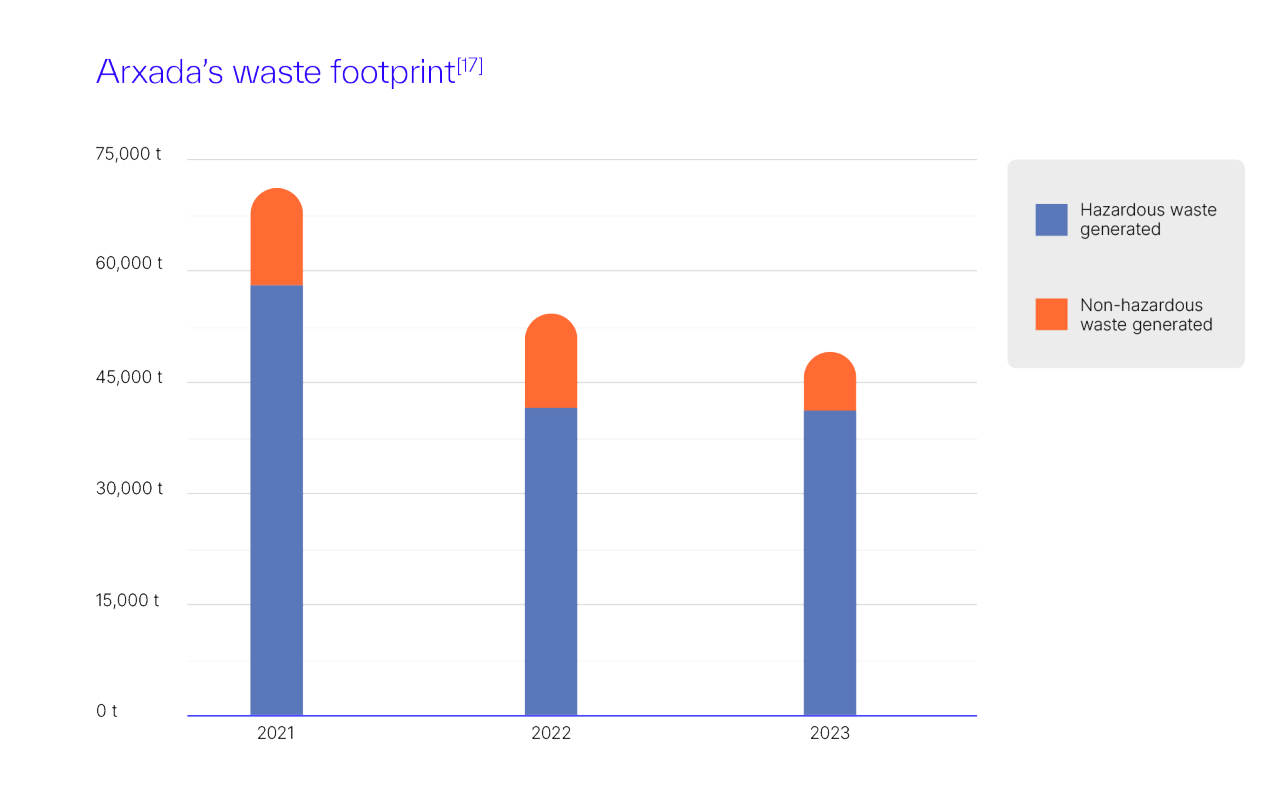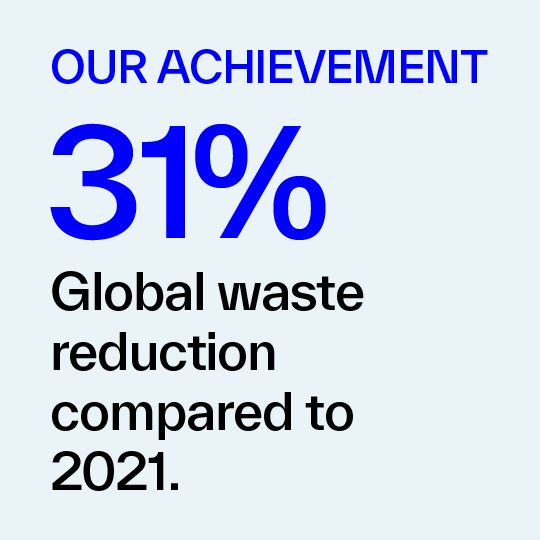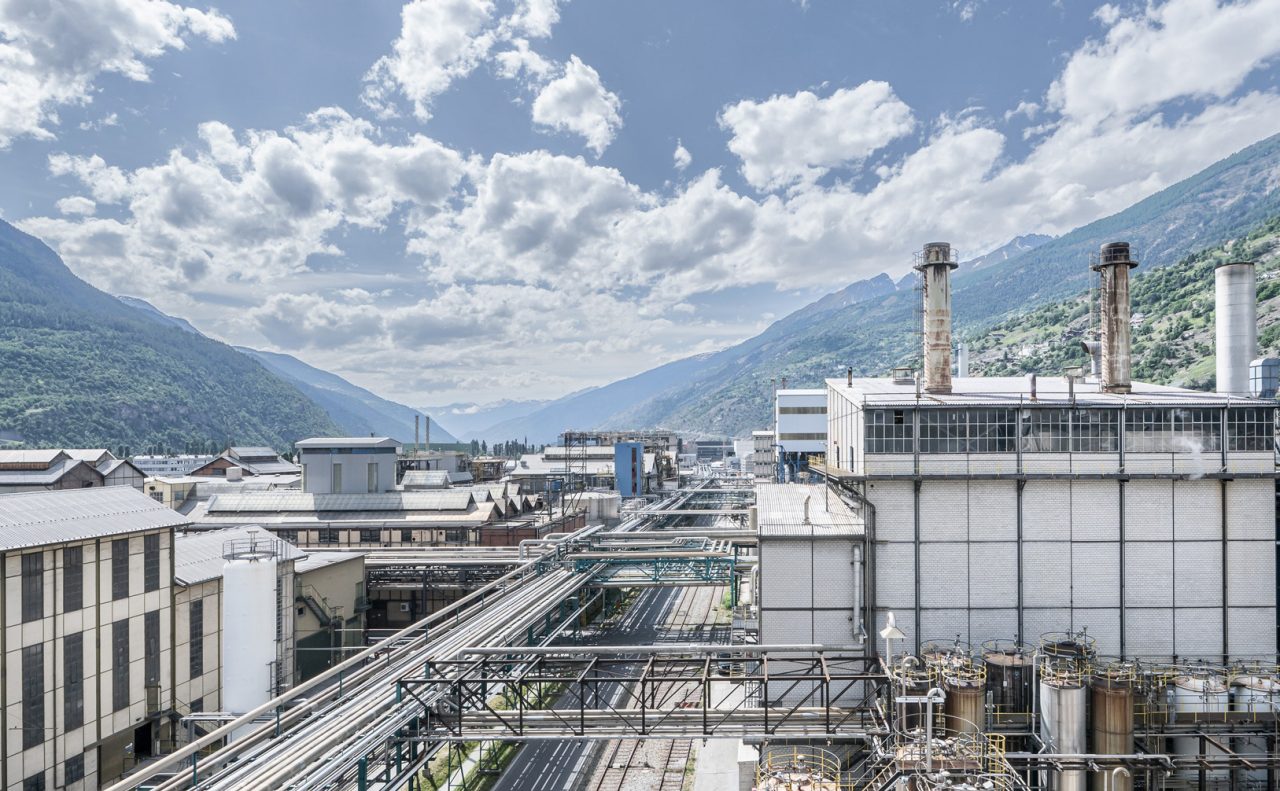Waste management

Managing different waste streams and focusing on reduction is a large part of our process optimization and commitment to protecting our planet. With local communities and wider society having interests in transparent waste disposal, we recognize the broader role we play in conserving natural resources to support a more circular economy.
Our waste minimization guidelines prioritize best practices and clarify responsibilities for sites to manage and reduce waste. Additionally, we take a site-specific approach to waste reduction, as waste classification and regulatory requirements vary by location and must be localized to ensure compliance.
Reducing our waste offers numerous direct and indirect benefits, such as increasing material efficiency, decreasing raw material purchases and reducing our Scope 3 emissions. As the section on our waste minimization initiatives and progress is outlined below, we understand the importance of addressing challenges and opportunities to make a positive impact and uphold our commitment to waste reduction and circular economy.
Our waste minimization plan
As we integrate our sustainability strategy across our enterprise, we are embedding waste management plans into our core operations. We use a centralized global data system and process to capture and manage environmental data from our manufacturing sites. This data allows the evaluation of links between activities, materials, products, supplies used and the waste generated.
Once assessed, Arxada's prioritization scheme is applied. We consider contributing factors, including regulatory requirements, risk reduction and environmental benefit. Once suitable waste streams for reduction are identified, our sites implement our waste minimization hierarchy with the goal of achieving maximum sustainable waste reduction.
To ensure our waste management is aligned with local regulations and industry best practices while considering newly available technological solutions, our site teams periodically review the performance of waste management practices to advance progress. Waste data is collected quarterly and reported annually through this report.
Waste management in action
The classification of waste as hazardous or non-hazardous at our facilities depends on applicable local regulations. We look to apply industry best practices to minimize our total waste footprint and promote a circular economy.


In 2023, we continued our focused waste reduction projects as part of our ongoing process optimization initiatives. For example, in 2023, we applied two new separation technologies at our Visp, Switzerland facility, aimed at reducing our volumes of hazardous waste destined for incineration and reducing our water consumption. We have achieved a 31% global reduction in waste compared to 2021, primarily driven by waste reduction activities at our Visp location over the past two years.
Looking forward to 2024
In 2024, we will continue to identify opportunities to reuse and recycle materials, minimizing resource consumption and working towards our objective to operate in a more circular manner. We will drive sustainable waste reduction by expanding our reduction plans to all our sites. At locations where further prevention and reduction of waste is not possible, we will continue our path towards circularity, as we look for alternatives to the by-products created in our processes. This includes by-products in our own operations, or the sale of by-products to other companies as inputs for their processes.
[15] NOx emissions do not include N₂O, which is included in our Scope 1.
[16] Recycling includes composting but does not include incineration.
[17] The scope of our waste data includes all manufacturing sites with FTE >10 (note, Auckland New Zealand and Trentham Australia manufacturing sites are included even though they have less than 10 FTEs) and Pilot Manufacturing sites with FTE >45. Waste from offices is not included, as this is not material to Arxada’s overall waste.
* Metrics have been assured by ERM CVS. For more information, please see the “External Assurance Statement” which details the scope, activities and conclusion of their engagement.


